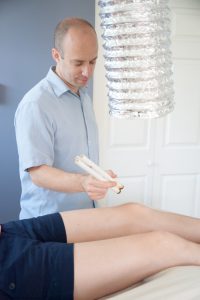Spring rain
the mugwort grows
along a road with weeds.
(Basho, Tr. Gabi Greve )
Moxa is a cotton-like material that is culled from the fuzzy underside of mugwort leaves. Moxibustion is the burning of moxa on or near the skin for therapeutic purposes. In the Ling Shu, the foundational acupuncture text of the classical period of China, it says, “Moxibustion is suitable for what the needle cannot do.” (1) Whereas acupuncture works by reorganizing the body’s resources, moxa is used to replenish those resources.

You may know of mugwort as a stubborn weed that grows at the edge of your property and in sidewalk cracks. These days, gardeners despise it for its ability to establish horizontal roots that survive weeding and can poison seeds of other plants. But around the world, ancient cultures found something special about mugwort. In Europe, North Africa, and China it was always celebrated at midsummer, usually by burning. Mugwort’s association with fire and the sun is reflected in moxa’s ability to “restore the yang,” the physiological warmth that keeps us healthy and alive.
Among its widely varied uses described in early texts are many life saving and life extending methods. The beloved Tang dynasty doctor Sun Si Miao said, “burning mugwort has extraordinary abilities. Although it is said acupuncture, herbs, and powders all have something they can reach, moxibustion is the most important… It is the most essential of all the essentials.”
My favorite moxa application is called “rice-grain moxa.” The moxa is rolled up in small pieces and placed on a bit of herbal cream that protects the skin, and burned. Before you even feel the heat, its effect is clearly palpable on the pulse. If the pulse is too deep, and a few needles cannot budge it, I’ll use bigger cones, often atop a slice of ginger. I estimate that at least 30% of successful treatments would fail without this technique. In cases of advanced degeneration in the nervous and endocrine systems, I may use fistfuls on top of a bed of ginger on the back (hence the need for the smoke extractor shown below).

Sadly, moxibustion is underused in modern times, at least in the west. It smokes and smells, and worse, it reeks of old ideas. Yes, moxa has few social benefits! Nevertheless, when caring for my patients, I depend on it completely.
(1) All quoted translations are from Lorraine Wilcox’ Moxibustion: The Power of Mugwort Fire.
